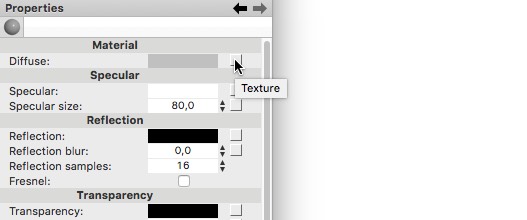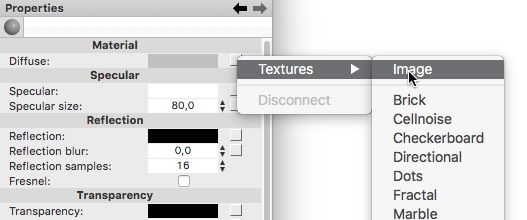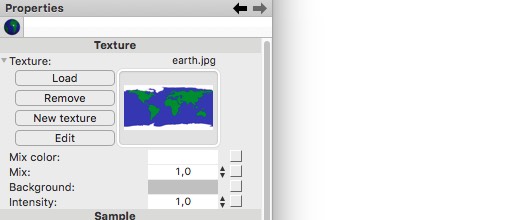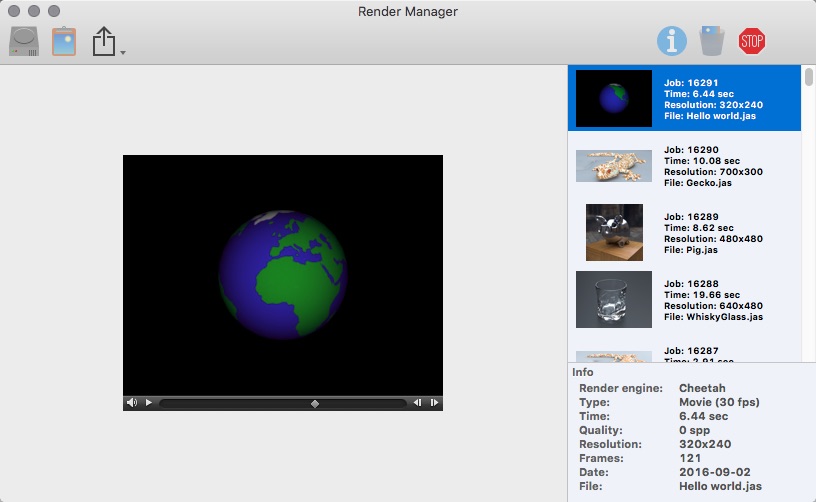Hello World
In this initial tutorial, you will learn how to make a simple rotating earth animation. You therefore will see how to create objects, materials and finally how to animate them. I hope you will enjoy it.
|
1. Add the earth ball to the scene A ball should appear in the 3D view and in the objects browser. The newly created ball is already selected. The properties of the ball are displayed within the properties editor. |

|
|
2. Create the material |

|
|
3. Set up the material A menu will now pop up. Please select "Textures -> image". This will connect a image texture node to the diffuse color channel. The texture properties will now be visible.To load the texture click on the "Load" button. Use the image file that contains the texture you want to map onto your world. Notice that we already get a preview of our material in the material browser. |
|
|
4. Assign the material to the earth It's also possible to drag and drop the material directly onto the ball in the 3D view. |
|
|
5. Record initial position |

|
|
6. Set up the ending time |

|
|
7. Define the end position of the animation |
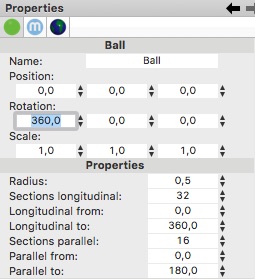
|
|
8. Finally record the endpoint of the animation |

|
|
9. Render the animation Finally it's time to render the animation. But that is the easiest part. Just click onto the "Render Animation"
|
|
Congratulations! You've just created your first 3D animation with Cheetah3D. Feel free to play around with all the other properties of the objects, tags and materials, and learn how they work. You can find the whole project in the examples folder which comes with Cheetah3D.

